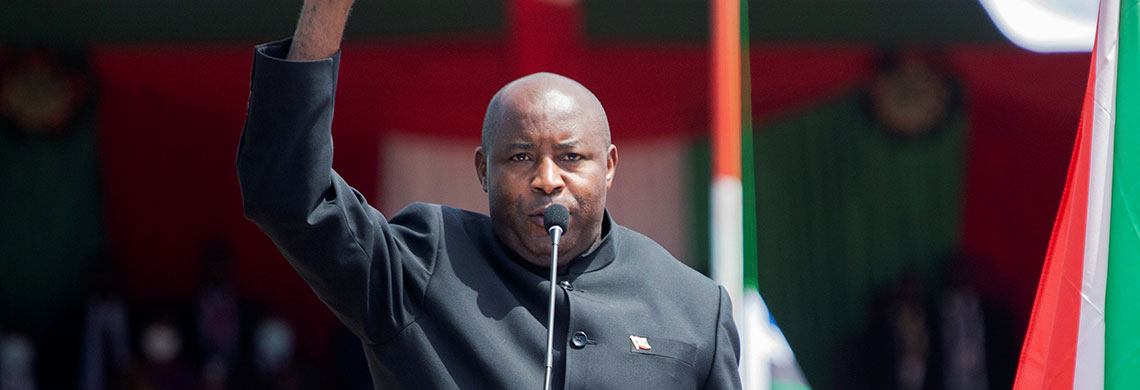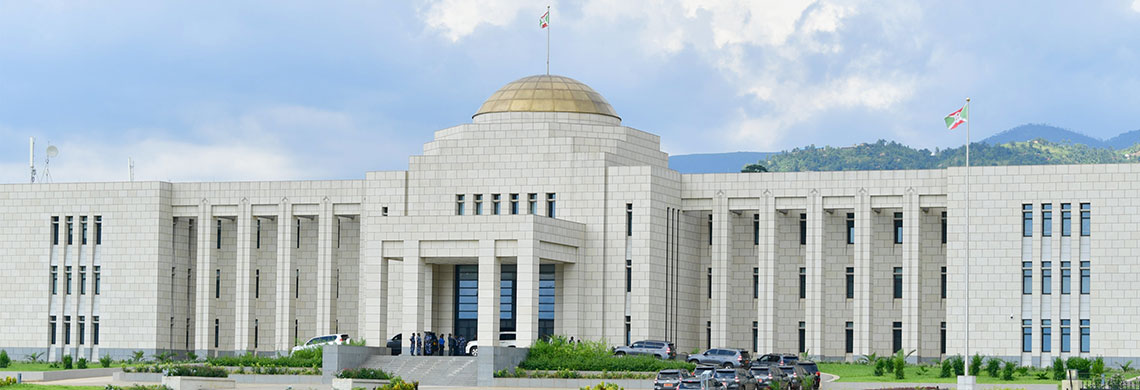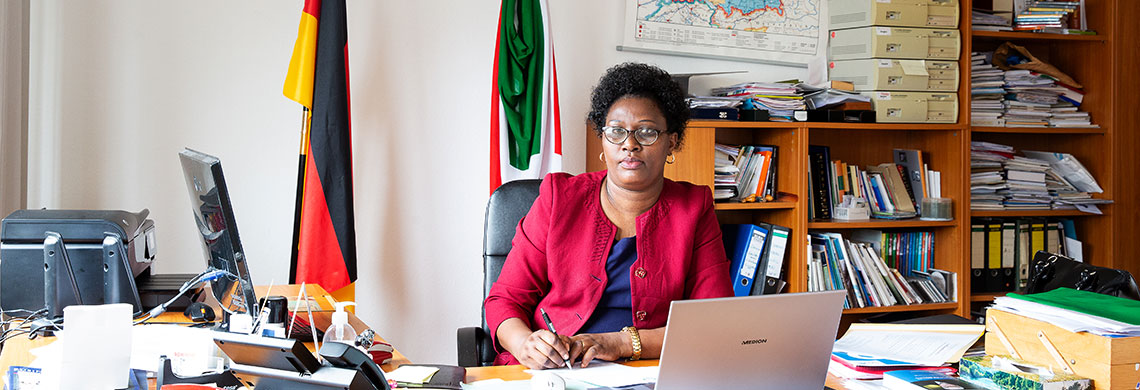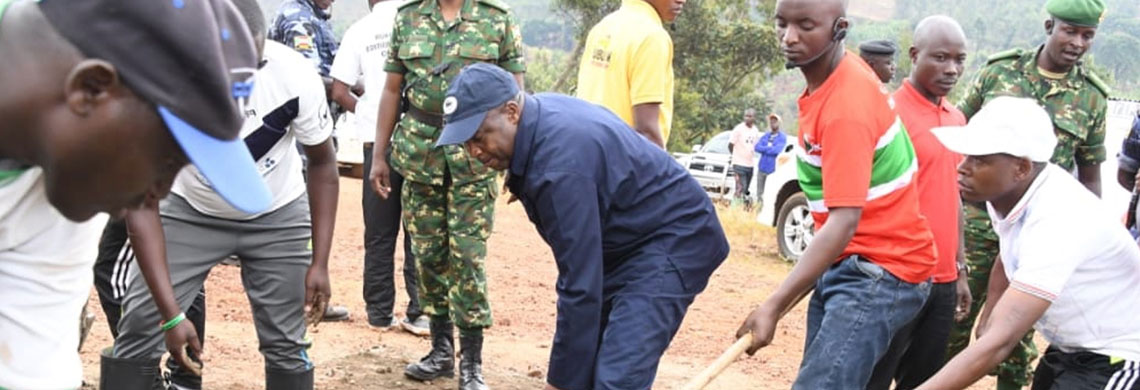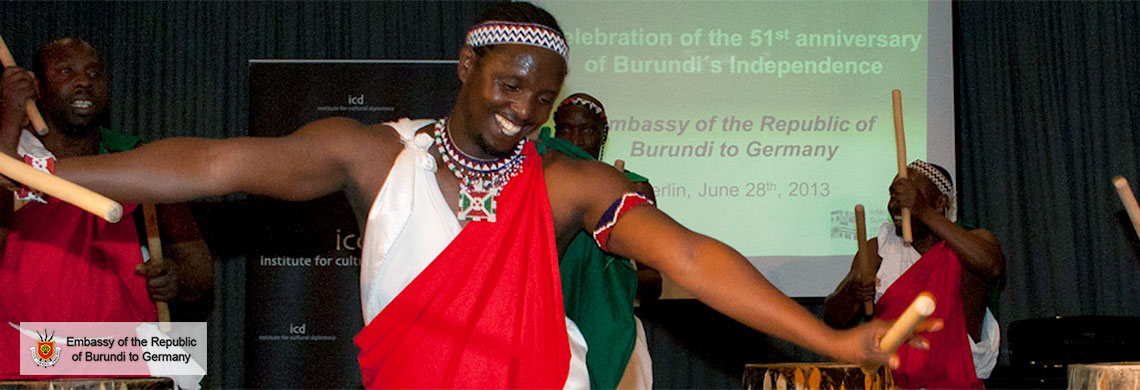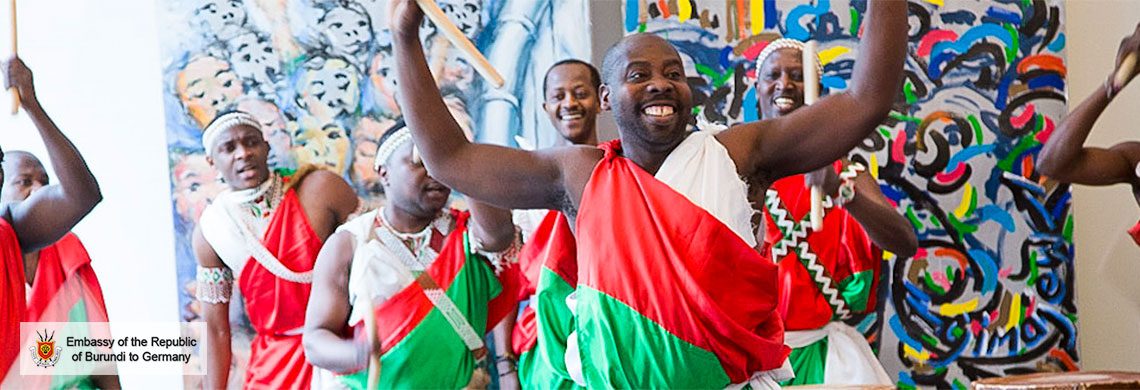Nature

Nature
Burundi is a landlocked country in the Great Lakes region of Africa and stretches over 27,834km2. Known as the ´heart of Africa´, Burundi is famous for its rich and varied natural landscape characterized by picturesque lakes, rivers, reserves, grasslands, national parks and mountainous terrains. As a relatively ´untouched´ destination on the African continent, Burundi´s natural beauty offers a unique and authentic perspective and experience to visitors.Along with a highly diverse flora, Burundi is home to a remarkable fauna including lions, antelopes, hares, buffalos, cynocephalus, crocodiles, hippopotamus as well as abundant number of bird species. This impressive range of species makes Burundi the ideal destination for safari tours.
Burundi is home to four topographical zones; the Rusizi Plain, the Congo-Nile Ridge, the central plateau and the depressions of the East and north-East. Overall, Burundi enjoys a pleasant average climate of between 23 and 24 degrees Celsius, although temperatures vary between topographical regions. Two major seasons constitute weather conditions in the country; the dry season (from June to September) and the rainy season (from February to May).
Lake Tanganyika
Burundi´s beautiful natural landscape is the major source of its tourism. Among its many natural attractions is the second largest lake in the African continent, Lake Tanganyika, which covers a total area of 32,000km2. As the second largest fresh water reservoir and second deepest river in the world, with a depth of 1400m, Lake Tanganyika boasts an impressive biodiversity with a wide assortment of around 1300 different plant and animal species. While Tanganyika is certainly the largest body of water, there is a great multitude of wetlands in Burundi, which collectively account for an estimated 2,150km2 of the country´s surface.Other major lakes and rivers include:
Lake Victoria is an important water source, which serves as a fork to the Kagera River.
Lake Cohoha covers an area of 7850 ha and it is one of the most attractive areas of cross-border lakes with Yaranda beach, agricultural banks and papyrus. The lake is is originated from and runs into River Kanyaru that finally runs into Nile.
Lake Rweru is shared between Burundi and Rwanda. It is the largest lake of the northern lakes (80km2 with 70% for Burundi). Surrounded by marshes and papyrus, it has floating islands which are unfortunately increasingly invaded by hyacinth.
The Ruvubu River rises in the north of Burundi, near the town of Kayanza and then does a southward arc through Burundi, being joined by the Ruvyironza River near Gitega. The waters gather from the most distant portion of the Nilebasin. After a stretch along the border, the Ruvubu crosses properly into Tanzania, before joining the Nyabarongo River on the Tanzania-Rwanda border near Rusumo Falls, to form the Kagera River.
The Ruvyironza (or Luvironza) River is considered by some to be the most remote source of the Nile, the world's longest river. From Burundi, it flows into the Kagera River in Tanzania, and from there into Lake Victoria.
The Nyabarongo (or Nyawarungu) begins in Nyungwe Forest, at a location considered by some to be the most distant source of the Nile. From this source it follows a course up to the north-western part of the country, then down through the centre to the south-east, eventually forming the main tributary of the Kagera River, which flows into Lake Victoria.
Karera Waterfalls
The falls of the Karera River are located in Rutana province, in the municipality of Musongati, 3 km away from the capital area of the Shanga zone. They are in a protected area covering 142 ha. There are four falls in the Kagera River, swelled by a branch from the Mwaro River coming in from the west which many believe is the source of the falls.On a first level, is a main fall subdivided into two parallel branches of a length estimated at 80 m about which pours on a basin. The latter parallel to the second fall in the Kagera forms a downstream with this one, the 4th which has the most powerful concentration of all the falls.
This fall consists of several waterfalls of different sizes intersected with two platforms. Another smaller waterfall is located roughly 50 m to the west of this main fall. Waters of these two falls converge on a second landing to form the third waterfall which pours on the valley.
The fifth completes its spectacular descent to give way to a river which first runs initially in small cascades and then slowly at the bottom of the valley, through a forest gallery, which leads to the Muyovozi river and the Malagarazi which is thrown finally into Lake Tanganyika after a long course until Kigoma in Tanzania.
One finds there large trees such as Neutonia buchananii surrounded by a savanna with Parinari curatellifolia and Pericopsis angolensis but also a lot of bird species all making it an awesome scene.
Burundi presents the falls of Karera to the tourists as one of the principal passages required for those who visit Burundi.The falls were added to the United Nations Educational, Scientific and Cultural Organization UNESCO World Heritage tentative list on May 9, 2007 in the mix cultural and natural category of the organization.
The Hot Springs of Muhweza
The hot springs of Muhweza are another unique feature one can find in Burundi. They lie 4 km south of the southern source of the Nile River, on the foot of the North-Eastern part of Kibimbi range. The tracks of access are in good state. .The thermal springs of Muhweza are formed by two basins supplied by ascending springs. One is dedicated to men and the other one, more hidden, is reserved for women. The thermal waters from the outlets of the two basins join with the river that we cross to go to them and come to form a tributary of the Jiji River.
The Germans’ Gorge
The gorge of Nyakazu, also called the Germans’ gorge, is a notch in the Nkoma mountain, following the boarder to Tanzania. This rift is relatively new and extends over 600 ha. Here one can find relics of an old German fort. Here we can also observe seasonal falls pouring over a valley covered with a forest.All around the rift, one can find a forest composed of Brachystegias. This area enjoys a very special microclimate. The animal species one can observe here are not all identified. The relics of the German fort represent a historical treasure and a very impressive structure.
Kibira National Park
The Kibira national park is the only mountain rainforest area of Burundi. It was created in 1933, while Burundi was still a part of Ruanda-Urundi, and institutionalized in 1980, together with other protected areas. It runs from Bugarama to the border of Rwanda. Its surface area is 40 000 hectares (about 80 km long and 8 km wide). It lies on four different provinces - Muramvya, Kayanza, Cibitoke, and Bubanza - before joining the Nyungwe forest in Rwanda. It culminates from 1600 to 2600 meters, the highest point being the Teza mount.The Kibira national park is composed of three intact forester zones and several stories due to the different altitudes. Before 1933, the area was used for the hunts of Burundian kings. Its sacred character was a key to its preservation. It now shelters a very diverse ecosystem and is considered as a leading biodiversity reserve on the African continent. Thousands of fauna and flora species have been identified, most of them endemic, including bugs, birds, primates, reptiles and big mammals. 644 types of plant have been listed, a number of which eatable and medical.
The park plays an essential role regarding the hydraulic system of the country, especially in the regulation of both Congo and Nil rivers. Moreover, several smaller river sources flow through the forest. It is estimated that around three quarters of the water going to the country’s largest dam actually come from this area. Thermal waters, known for their therapeutic virtues, also exist on the sides of the forest.
Since 1996, the park is on the publication list of the International Union for Conservation of Nature (IUCN). Some perturbations occurred during the 1993 crisis, linked to wood and mine exploitation, as well as forest fires. Since then, however, hunt, fishing, harvesting, and mining activities have been forbidden. Tourism is also well regulated. The 180 km of paths that go through the area can only be used on foot. The preservation of the Kibira national park is ensured by a unique cooperation with the local population to promote the sustainable use of forest resources.
The Ministry of national education and culture of Burundi made a submission in 2007 for the Kibira national park to enter the UNESCO world heritage list.
Ruvubu National Park
The Ruvubu national Park covers a significant amount of land, extending over four provinces and 8 villages, on both sides of the Ruvubu River on the eastern coast of Burundi. The Ruvubu National Park was set up in the year 1980, following an advise issued by the UNESCO. It covers an area of about 500 square kilometers. The Ruvubu National Park of Burundi is the homeland of some of the most striking wildlife animals and species of flowers.Here one can find more than 44 different mamal species belonging to more than 18 different families. 425 species of birds can also be observed in this park. Among the other species that can be found are the reptiles with crocodiles and a lot of different snakes. To summarize, wildlife in the Ruvubu National Park consists of animals like hippopotamus, buffalo, crocodiles, leopards, monkeys, antelopes, lions, etc.
The Ruvubu National park aims at preserving the endangered species of animals and birds. Human habitation had been evactuated from the park so that the different wildlife species could thrive well.
The Ruvubu National park of Burundi is easily accessible by road as it lies about 216 km away from Bujumbura and the park itself has about 60 km of tracks. Camping facilities for the visitors is the newest addition to the park and makes it more attractive. With the help of the UNESCO, security around the park was reinforced to prevent poaching, agricultural pressure and fires. . Protecting and preserving the wildlife and the beauty of the park is all the more important since Burundi puts a great emphasis on tourism and eco-tourism to promote a more sustainable development.

